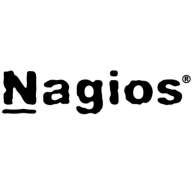

LogicMonitor and Nagios Core compete in the IT infrastructure monitoring category. LogicMonitor appears to have an edge due to its user-friendly interface and extensive features catering to complex environments, appealing to a broader range of users.
Features: LogicMonitor offers customizable dashboards, quick data visualization, and versatile interaction for users with varied technical expertise. It excels in complex environments with features like customizable data sources and granular alerting. Meanwhile, Nagios Core, as an open-source solution, provides flexibility and customization options but requires significant technical expertise for effective setup and configuration.
Room for Improvement: LogicMonitor's reporting capabilities and data source configuration usability could be enhanced, alongside its mobile application and topology mapping features. Nagios Core faces challenges with a steep learning curve, necessitating advanced knowledge for setup. Its interface and dashboard require modernization to better user experience, and improvements in automation are needed.
Ease of Deployment and Customer Service: LogicMonitor offers flexible deployment across cloud configurations with outstanding customer support known for responsiveness. It provides real-time solutions, catering directly to client needs. Nagios Core is typically deployed on-premises, offering cost benefits but limited deployment flexibility. Its community-based support requires expertise to navigate.
Pricing and ROI: LogicMonitor is more expensive but offers significant ROI by reducing operational costs and consolidating monitoring needs into one platform. Its scalable pricing may be challenging for smaller organizations due to higher per-device costs. Conversely, Nagios Core's open-source nature offers cost-effectiveness, appealing to organizations with technical expertise to manage the solution without licensing fees, though initial setup costs might be higher.
The solution is scalable.
I tried many other solutions at work, however, in terms of Nagios, I haven't seen any disruption or downtime.
It has a very handy dashboard, providing live alerts and visibility for everything.


LogicMonitor provides infrastructure and network monitoring, alerting, and reporting across environments like AWS, Azure, and on-premises.
LogicMonitor aids businesses and managed service providers in maintaining system health, performance, and availability. It supports various technologies including Citrix, Cisco Voice systems, operating systems, virtual machines, and network devices. Businesses benefit from dashboards and data insights for proactive management, customizable data sources, and integration with third-party applications like Slack or ServiceNow. AI technology enhances monitoring capabilities by recognizing normal behavior and updating monitored elements, while multiple monitoring features consolidate data sources into one interface.
What are LogicMonitor's key features?
What benefits or ROI should users expect?
LogicMonitor is utilized across diverse industries by managed service providers to ensure seamless monitoring and management of clients' systems. This includes application performance monitoring, manual topology mapping, SLA calculations, and improvement of role-based permissions. Companies also seek enhanced resources view, better collector upgrade processes, and streamlined customization for monitoring from the repository.
This is IT infrastructure monitoring's industry-standard, open-source core. Free without professional support services.
We monitor all Network Monitoring Software reviews to prevent fraudulent reviews and keep review quality high. We do not post reviews by company employees or direct competitors. We validate each review for authenticity via cross-reference with LinkedIn, and personal follow-up with the reviewer when necessary.